Of the most important minerals for human health, iron is at the tippy top. It’s an essential nutrient—every cell in the body depends on it. Iron is key for energy and cellular growth, it plays a supporting role in our immune health, and it’s crucial for happy hormones. Not to mention, iron is needed to form hemoglobin (arguably, the most valuable component of red blood cells!). Luckily, there are plenty of ways to make sure you’re getting enough iron, via iron-rich foods and high-quality iron supplements. Today, we’re focusing on a subset of your grocery basket: fruits high in iron.
Featured image by Michelle Nash.

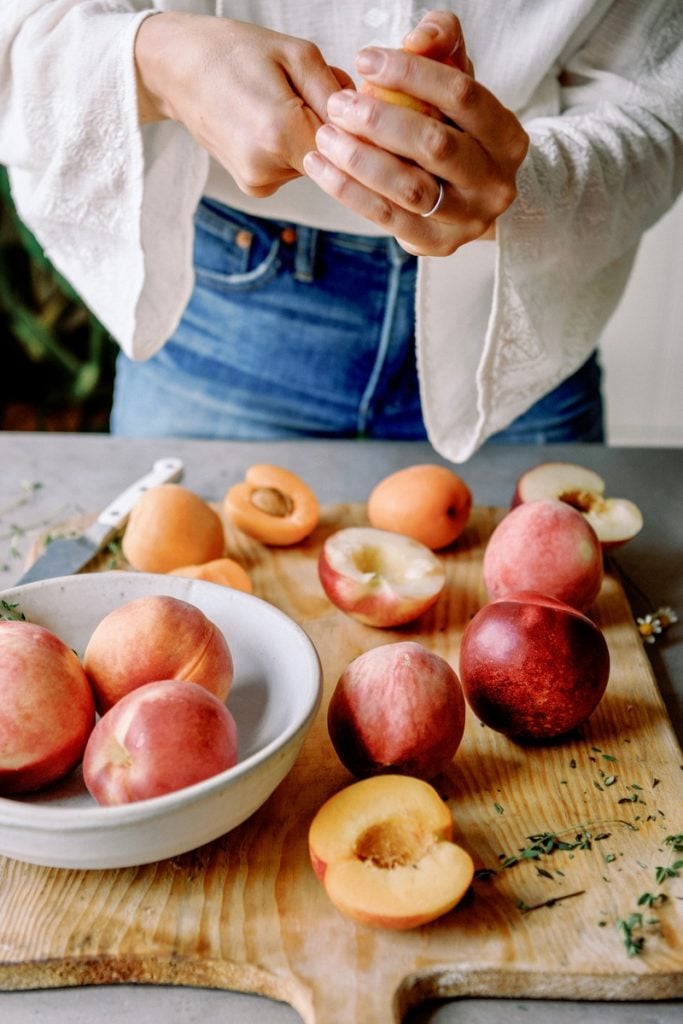

Why is iron important?
As mentioned, iron is an essential mineral. Given its importance in the human body, it has an array of responsibilities. However, the main purpose of iron is to transport oxygen in the blood. Iron’s other benefits include general energy and focus, gastrointestinal health, immune support, and body temp regulation. All of that said, did you know your body can’t make iron? Meaning, we must consume it through diet—ideally, you’re getting enough iron from the foods you eat. Hello, fruits high in iron!


Signs and Symptoms of Iron Deficiency Anemia
Do you know someone who laments about always being fatigued or has a difficult time regulating their body temp? There’s a chance they may be iron deficient. For context: without enough iron, your body can’t produce enough hemoglobin. This results in iron deficiency (which is no joke!). You’re left feeling tired, groggy, short of breath, and craving unusual substances. Initially, iron deficiency anemia can be relatively mild—so much so that it goes unnoticed. But as the body becomes more iron deficient, the signs and symptoms intensify.
If you suspect you’re low in iron, a healthcare provider can properly diagnose iron deficiency anemia.


What is the Recommended Daily Allowance (RDA) of iron?
Keep in mind that this is a generalized recommendation to fit most people. But as a guideline, adult women (ages 19-50) need 18mg of iron per day. Women who have entered menopause only need approximately 8mg of iron per day. If you’re pregnant, have a heavy menstrual cycle, or exercise professionally, chat with your healthcare provider to ensure you have adequate iron levels.
Does iron come from animal or plant foods?
Both! Iron is found in a variety of animal-based and plant-based ingredients. The best food sources of heme iron include organ meats, fish and seafood, duck, and ground beef. These foods are high in vitamin B12, too. A few of the top non-heme food sources are dried apricots, prune juice, lentils, blackstrap molasses, quinoa, beans, and cooked spinach.


Heme vs. Non-Heme Iron
Let’s back up. Dietary iron comes in two forms: heme and non-heme. Heme iron is found only in animal protein (i.e., meat, poultry, and seafood). This is the most functional iron in the human body. Non-heme iron is found in plant foods, like beans, nuts, seeds, and leafy greens. Although non-heme iron isn’t as bioavailable as heme iron, it is still a viable source.
Examples of heme iron:
- Oysters, clams, mussels
- Beef or chicken liver
- Organ meats
- Canned sardines
- Beef
- Poultry
- Canned light tuna
Examples of non-heme iron:
- Grains
- Beans
- Dark chocolate
- Lentils
- Spinach
- Potatoes (skin on)
- Nuts and seeds
- Fruit

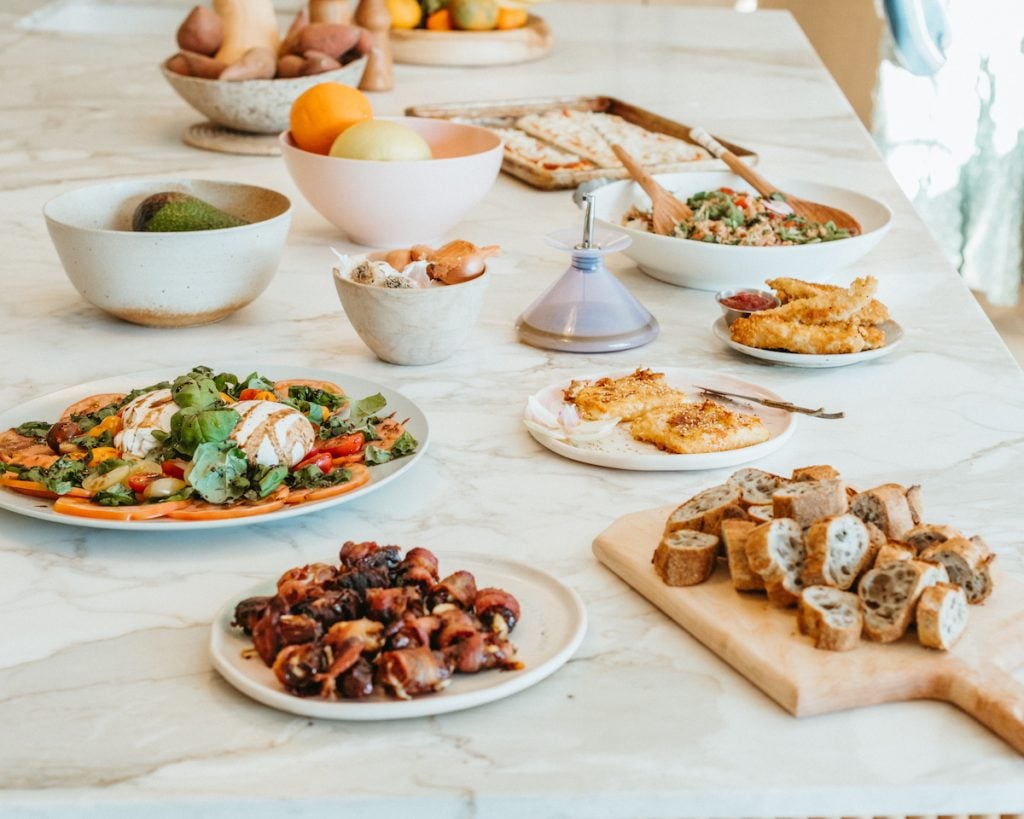
How To Increase Your Iron Absorption
Eat vitamin C! More on the science behind how it increases iron’s absorption, here. Beyond orange juice, other sources of vitamin C include grapefruit, lemons, bell peppers, strawberries, cantaloupe, and broccoli. Furthermore, opt to cook in a cast-iron skillet. Not only does this significantly lower the possible consumption of toxins, but cast iron cooking increases the non-heme iron content of foods. In one study, researchers looked at the amount of iron in 20 foods before and after cooking in cast iron pans. Over 90% contained more iron when cooked in iron pans than in non-iron glassware.


10 Fruits High In Iron
Along with plant foods like spinach, beans, and nuts, below are examples of non-heme sources of iron. For fruits that aren’t currently in season, opt to buy them frozen. They will still taste delicious and can be incorporated in both cold recipes and baked dishes.

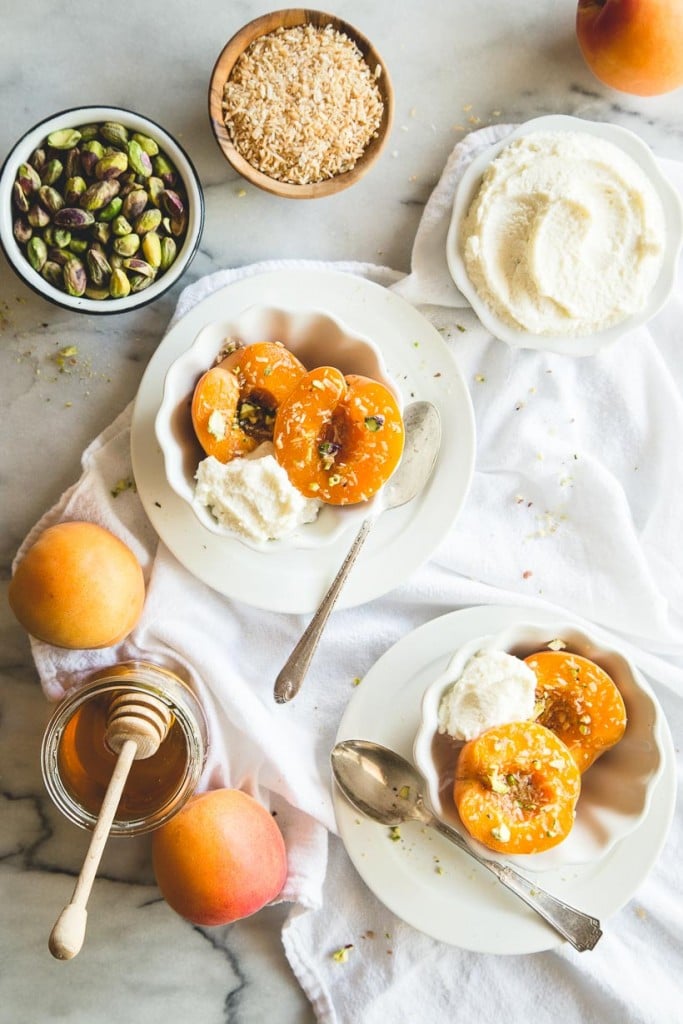
Dried Apricots
Dried apricots (at 10mg per 1/2 cup) are a significant source of iron. Why dried? Because dried fruits contain much less water their fresh counterparts, their iron and other nutritional content is concentrated. That said, dried fruit is higher in sugar, so it’s best to pair dried fruit with a source of protein and fat for blood sugar balance.
Recipe: Honey Roasted Apricots
Dried Prunes
Like dried apricots, dried prunes are also very high in iron. A 1/2 cup serving of dried prunes contains 4.5mg of iron. Dried prunes are also incredibly helpful for constipation as they’re rich in fiber and potassium. Otherwise, prune juice also counts towards your daily iron quota.

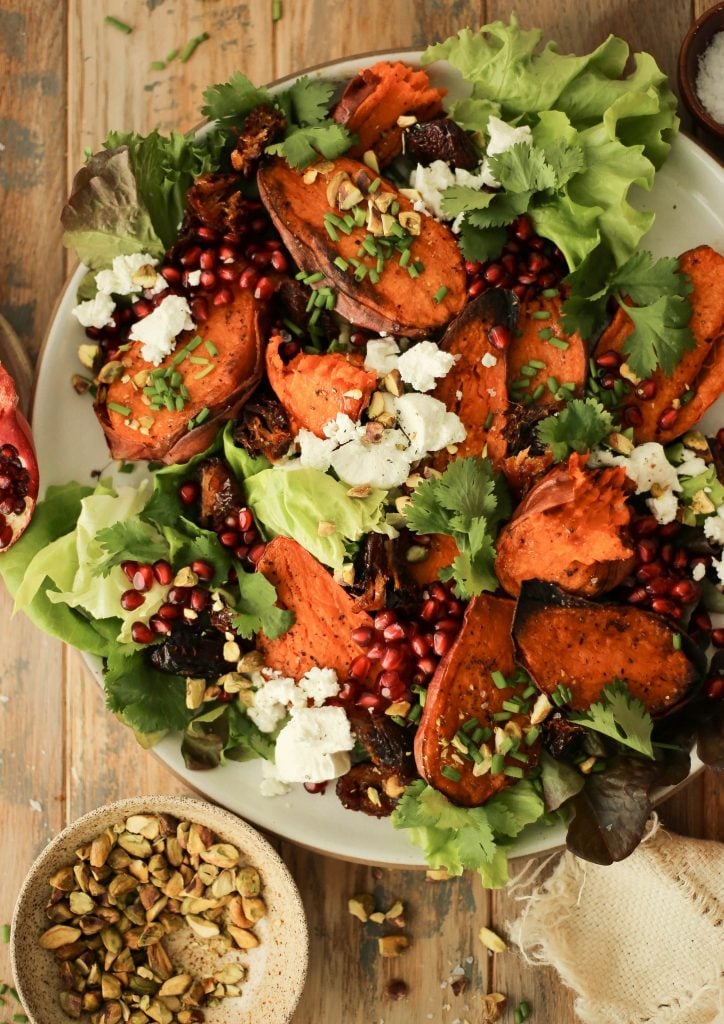
Dates
Who doesn’t love dates? Chewy and versatile, they pair well with both sweet and savory dishes. Eating 1/2 cup of dates can provide over 10% of the RDA for iron. Their health benefits make them a nourishing option as a sugar alternative in your favorite baked good. There’s also some evidence that they can shorten labor!
Recipe: Roasted Sweet Potato And Caramelized Dates


Raisins
A household favorite, raisins also contain non-heme iron. A 1/2 cup of raisins contains 1.3mg of iron (that’s about 7%) of the recommended daily amount for most adult females, and 16% for adult men. Raisins are a source of quick energy—consider them a pre-workout snack or topping on a protein-forward bowl of Greek yogurt.
Recipe: Grilled Octopus With Almond Pepper Raisin Chutney
Mulberries
Have you ever had a mulberry? Mulberries are colorful berries that are eaten both fresh and dried. They’re a good source of vitamin C and several plant compounds. Most impressively, mulberries are an excellent source of iron. They crease red blood cell production and their polyphenols help keep blood vessels healthy. You’ll likely find dried mulberries at your grocery store, and their delicious in salads and on oatmeal.


Raspberries
When it comes to non-heme sources of iron, add raspberries to your grocery list. One cup of raspberries packs an antioxidant punch, as well as roughly 5% of your daily RDA for iron. These—along with other fiber-rich berries—are helpful for balancing blood sugar.
Recipe: Raspberry Cocoa Energy Balls


Blackberries
Along with raspberries, one cup of blackberries contains about 7% of your RDA or iron. However, they also act as an iron absorber. Strawberries, blueberries, cranberries, and blackberries are all adequate sources of vitamin C. Therefore, the consumption of any type of berry increases the absorption rate of non-heme iron.
Recipe: Almond And Blackberry Cream Pavlova

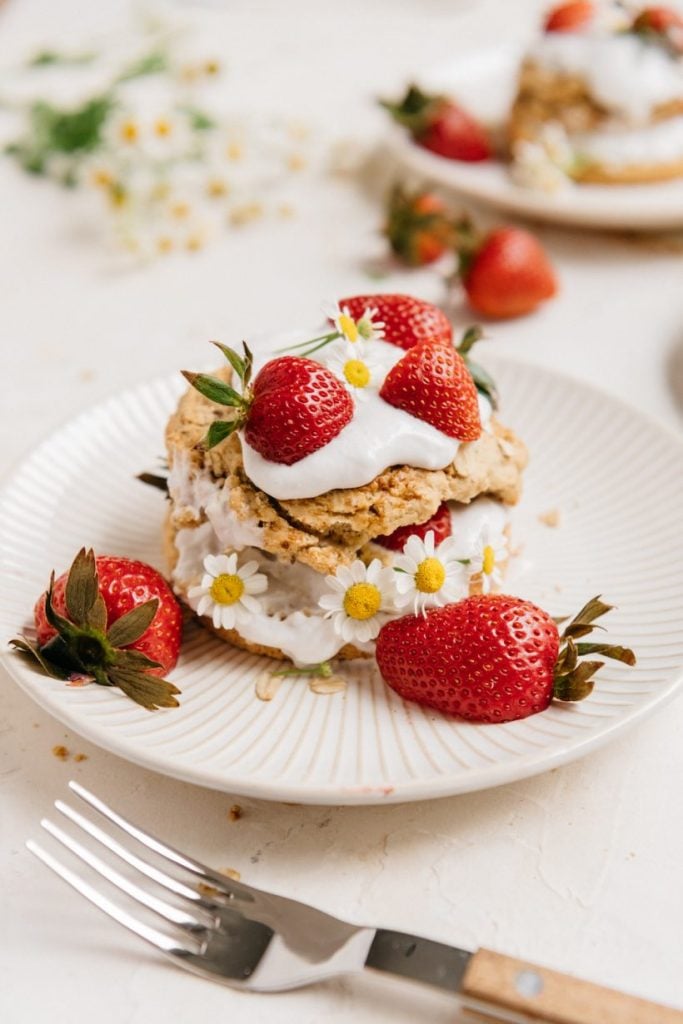
Strawberries
Not only do strawberries contain iron (about one cup of strawberries contains at least 3% of the RDA), but strawberries also contain vitamin C, aiding in overall iron absorption.
Recipe: Gluten-Free Strawberry Shortcake


Watermelon
A summer staple, watermelon is one of the best fruits that help increase hemoglobin—due to its iron and vitamin C content. Not only is watermelon wonderful for improving and maintaining ideal iron levels, but it’s incredibly hydrating. Because it’s higher in natural sugars, aim to pair watermelon with protein and healthy fats, like in this Watermelon Caprese Salad.
Recipe: Watermelon Tomato Caprese Salad

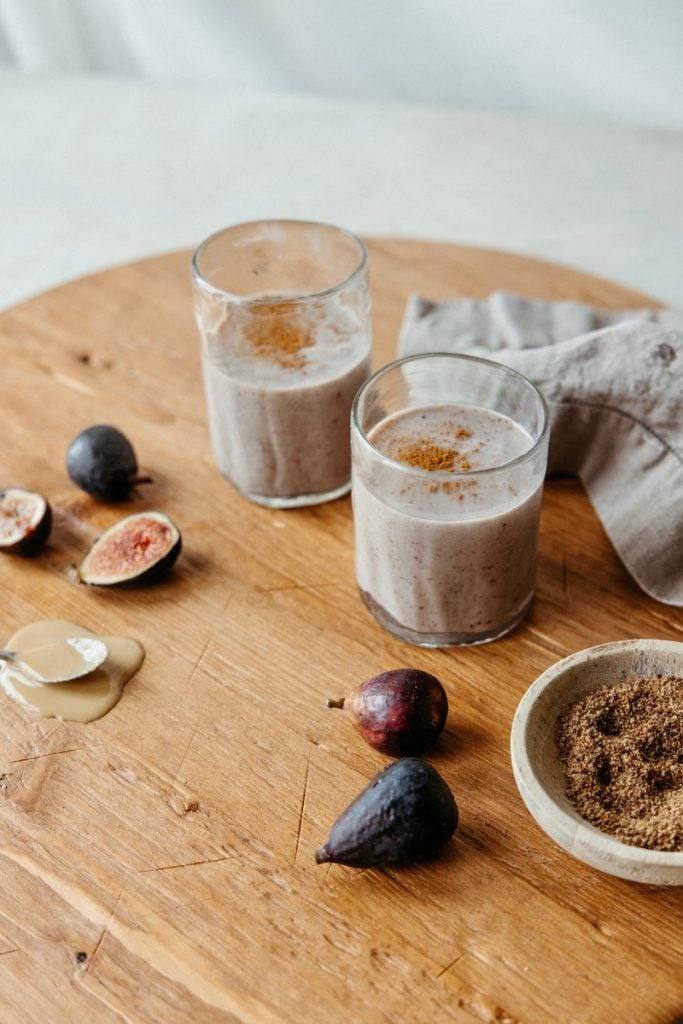
Figs
Last but not least, figs. They can be eaten fresh or dried, but their iron content is amplified when they are soaked overnight. Although they may not be the highest source of iron, they can improve hemoglobin levels in the blood. We love figs in smoothies, salads, and of course, on a fall charcuterie board.
Recipe: Get Figgy With It Smoothie






